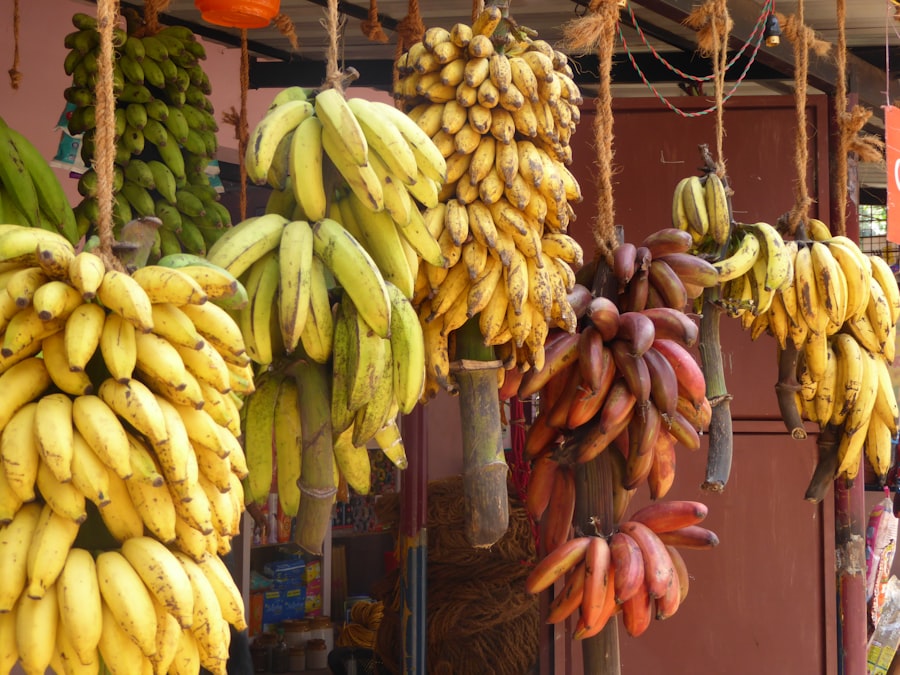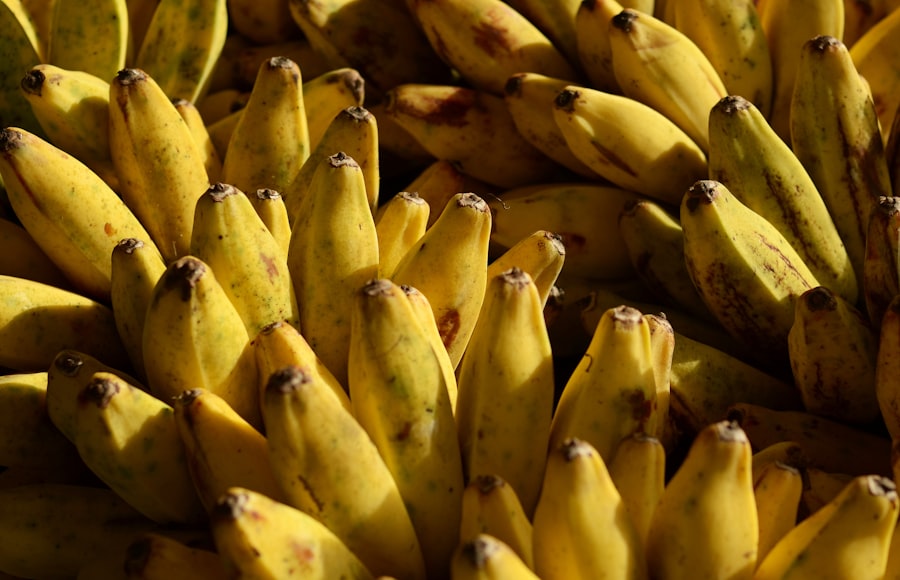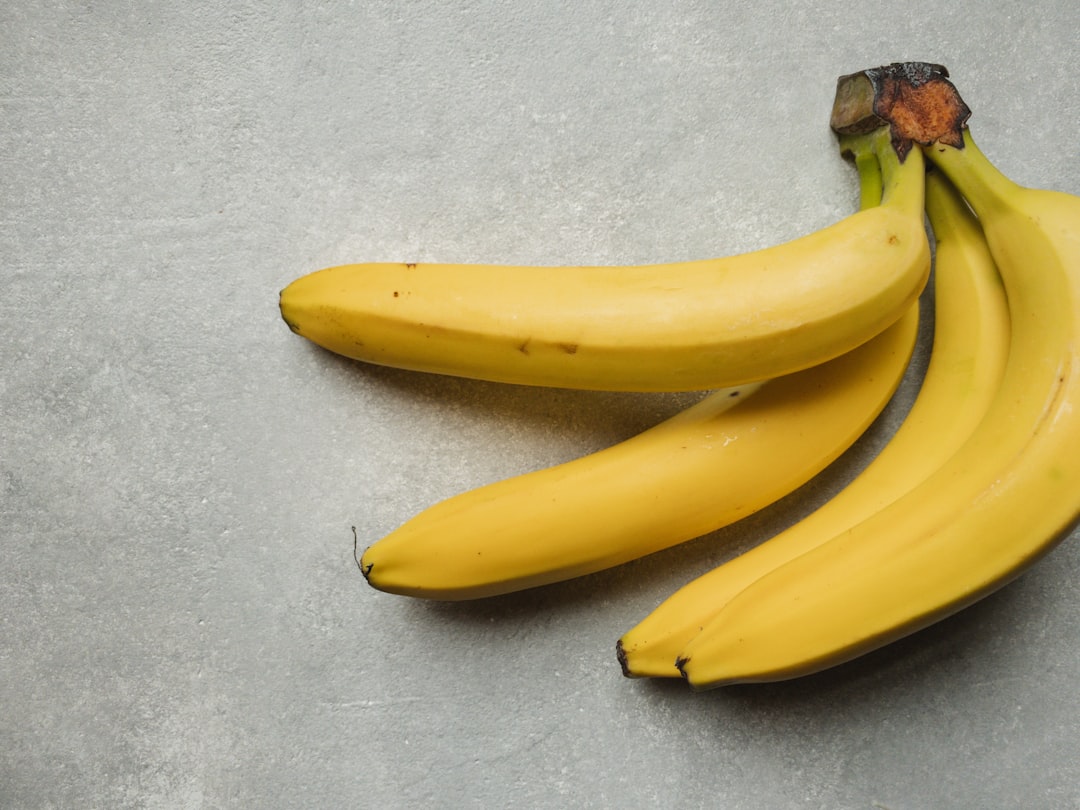Bananas are one of the most widely consumed fruits in the world, cherished for their sweet flavor, nutritional benefits, and versatility. However, the journey from a green, unripe banana to a perfectly ripe one is a fascinating process that involves various biochemical changes. Understanding banana ripening is essential not only for consumers but also for producers and distributors who aim to deliver the best quality fruit.
The ripening process is a complex interplay of environmental factors, hormonal changes, and biochemical reactions that transform the fruit’s texture, flavor, and aroma. The ripening of bananas is particularly interesting because it is a climacteric fruit, meaning it continues to ripen after being harvested. This characteristic allows bananas to be picked while still green and transported over long distances without spoiling.
The ability to control the ripening process has significant implications for the global banana trade, ensuring that consumers receive fresh fruit regardless of where it is grown. As such, understanding the mechanisms behind banana ripening can lead to improved storage techniques and better quality fruit for consumers.
Key Takeaways
- Ethylene is a key hormone that triggers and regulates banana ripening.
- Bananas are climacteric fruits, meaning they ripen after harvest due to increased ethylene production.
- Temperature and humidity significantly influence the speed and quality of banana ripening.
- Controlled atmosphere storage helps extend banana shelf life by managing ethylene levels and environmental conditions.
- Shipping green bananas delays ripening, allowing for longer transport and fresher fruit upon arrival.
The Role of Ethylene in Ripening
Ethylene is a plant hormone that plays a pivotal role in the ripening process of bananas and many other fruits. It acts as a signaling molecule that triggers various physiological changes within the fruit. When bananas are harvested, they begin to produce ethylene gas, which initiates a cascade of reactions that lead to ripening.
This gas not only promotes the breakdown of starches into sugars, enhancing sweetness, but also softens the fruit’s texture by breaking down pectin in the cell walls. The production of ethylene is not uniform; it can vary based on several factors, including the maturity of the fruit at harvest and environmental conditions. As bananas ripen, their sensitivity to ethylene increases, creating a feedback loop that accelerates the ripening process.
This phenomenon is why bananas are often stored with other fruits that emit ethylene, as it can hasten their ripening. Understanding the role of ethylene in banana ripening is crucial for optimizing storage and transportation methods to ensure that bananas reach consumers at their peak quality.
Understanding Climacteric and Non-Climacteric Fruits

Fruits are generally classified into two categories: climacteric and non-climacteric. Climacteric fruits, such as bananas, tomatoes, and avocados, continue to ripen after being harvested due to their ability to produce ethylene. This characteristic allows them to be picked while still green and transported over long distances without losing quality.
In contrast, non-climacteric fruits, such as strawberries and grapes, do not ripen once harvested; they must be picked at their peak ripeness to ensure optimal flavor and texture. The distinction between these two types of fruits has significant implications for agricultural practices and supply chain management. For climacteric fruits like bananas, producers can take advantage of their ripening capabilities by harvesting them early and controlling the ripening process through temperature and ethylene exposure.
Understanding these classifications helps growers and distributors make informed decisions about when to harvest and how to store their products.
The Impact of Temperature on Ripening
| Temperature (°C) | Ripening Duration (Days) | Ethylene Production (µL/kg/hr) | Firmness (N) | Color Change Index |
|---|---|---|---|---|
| 5 | 20 | 0.5 | 45 | 1.2 |
| 10 | 15 | 1.2 | 38 | 2.5 |
| 15 | 10 | 3.0 | 30 | 4.0 |
| 20 | 7 | 5.5 | 22 | 6.8 |
| 25 | 5 | 7.8 | 15 | 8.5 |
| 30 | 4 | 9.0 | 10 | 9.2 |
Temperature plays a critical role in the ripening process of bananas. The ideal temperature range for ripening bananas is between 15°C to 20°C (59°F to 68°F). At these temperatures, the production of ethylene is optimized, and the biochemical processes that lead to ripening occur efficiently.
However, temperatures that are too low can slow down or even halt the ripening process, while excessively high temperatures can lead to premature ripening or spoilage. In commercial settings, temperature control is vital for maintaining banana quality during storage and transportation. Cold storage can be used to delay ripening during transit, allowing bananas to be shipped over long distances without losing their freshness.
Once they reach their destination, controlled warming can be applied to initiate the ripening process at the right time. Understanding the impact of temperature on banana ripening enables producers and distributors to implement effective strategies for preserving fruit quality throughout the supply chain.
The Importance of Controlled Atmosphere Storage
Controlled atmosphere storage (CAS) is an advanced technique used in the preservation of perishable goods, including bananas. This method involves regulating the levels of oxygen, carbon dioxide, humidity, and temperature within storage facilities to create an optimal environment for fruit preservation. By reducing oxygen levels and increasing carbon dioxide concentrations, CAS slows down respiration rates and delays the ripening process.
The benefits of controlled atmosphere storage are particularly significant for bananas, which are sensitive to ethylene and temperature fluctuations. By utilizing CAS, producers can extend the shelf life of bananas while maintaining their quality. This technology not only reduces spoilage during transportation but also allows for better inventory management in retail settings.
As a result, consumers can enjoy fresher bananas with enhanced flavor and texture.
The Role of Hormones in Ripening

In addition to ethylene, several other hormones play a role in the ripening process of bananas. Auxins, gibberellins, and abscisic acid are among the key hormones involved in regulating growth and development in plants. Auxins are known to promote cell elongation and growth, while gibberellins stimulate seed germination and fruit development.
Abscisic acid is involved in stress responses and can influence fruit maturation. The interplay between these hormones and ethylene creates a complex network of signals that govern the ripening process. For instance, auxins may promote the synthesis of ethylene during certain stages of development, while abscisic acid can modulate ethylene sensitivity in response to environmental conditions.
Understanding these hormonal interactions provides valuable insights into how bananas ripen and how growers can manipulate these processes for better fruit quality.
The Influence of Humidity on Ripening
Humidity is another critical factor that influences banana ripening. High humidity levels can help maintain moisture content within the fruit, preventing dehydration and ensuring optimal texture during ripening. Conversely, low humidity can lead to moisture loss, resulting in shriveled or dry bananas that lack flavor and appeal.
In commercial settings, maintaining appropriate humidity levels during storage and transportation is essential for preserving banana quality. Humidity control systems can be implemented in storage facilities to create an environment that minimizes moisture loss while allowing for proper air circulation. By understanding the influence of humidity on banana ripening, producers can implement effective strategies to enhance fruit quality and extend shelf life.
Ethylene Production and Sensitivity in Bananas
Bananas exhibit unique patterns of ethylene production and sensitivity throughout their development.
This rise in ethylene production coincides with changes in texture, flavor, and aroma as the fruit transitions from unripe to ripe.
Moreover, bananas become increasingly sensitive to ethylene as they approach maturity. This heightened sensitivity means that exposure to even small amounts of ethylene gas can trigger rapid ripening processes. This characteristic is often exploited in commercial settings where bananas are stored alongside other ethylene-producing fruits or exposed to controlled amounts of ethylene gas to synchronize ripening across batches.
The Use of Ethylene Gas for Ripening
The application of ethylene gas has become a common practice in the banana industry for managing the ripening process effectively. By exposing green bananas to controlled concentrations of ethylene gas in specially designed ripening rooms or chambers, producers can accelerate the transition from green to ripe fruit at a desired pace. This method allows for precise timing in delivering ripe bananas to market while minimizing waste.
Ethylene gas treatment not only enhances uniformity in ripening but also improves overall fruit quality by ensuring that bananas develop optimal sweetness and flavor profiles before reaching consumers. The use of ethylene gas has revolutionized banana distribution practices by allowing producers to synchronize harvests with market demand effectively.
Factors Affecting Banana Shelf Life
Several factors influence the shelf life of bananas beyond just temperature and humidity. The initial quality at harvest plays a significant role; bananas picked at optimal maturity will generally have a longer shelf life than those harvested too early or too late. Additionally, handling practices during transportation can impact shelf life; bruising or physical damage can accelerate spoilage processes.
Other factors include exposure to pathogens or pests during storage and transportation conditions such as air circulation within shipping containers. By understanding these various factors affecting banana shelf life, producers can implement best practices throughout the supply chain to ensure that consumers receive high-quality fruit with extended freshness.
The Benefits of Green Banana Shipping
Shipping green bananas offers numerous advantages for both producers and consumers alike. By harvesting bananas at an early stage of maturity, producers can minimize spoilage during transportation while ensuring that fruit arrives at its destination in optimal condition for controlled ripening. This practice not only extends shelf life but also allows for better inventory management within retail settings.
Moreover, green banana shipping aligns with consumer preferences for fresh produce while reducing food waste across the supply chain. As consumers become increasingly aware of sustainability issues related to food production and distribution, understanding the science behind banana ripening becomes essential for making informed choices about purchasing practices. In conclusion, the intricate processes involved in banana ripening highlight the importance of scientific knowledge in agriculture and food distribution.
By leveraging this understanding—particularly regarding ethylene production, temperature control, humidity management, and hormonal interactions—producers can optimize their practices for better quality fruit delivery while meeting consumer demands effectively.
Bananas are typically shipped while still green to ensure they arrive at their destination in optimal condition, allowing them to ripen during transit. This practice helps to minimize spoilage and maintain the fruit’s quality. For more insights into the fascinating world of bananas and their shipping processes, you can read this related article on the topic at Hey Did You Know This.
WATCH THIS! The 100-Year Lie That Built Your Grocery Store — The Hidden Truth About “Fresh” Produce
FAQs
Why are bananas shipped green?
Bananas are shipped green to prevent them from ripening too quickly during transportation. Green bananas are firmer and less prone to bruising, allowing them to stay fresh until they reach their destination.
How does shipping bananas green affect their ripening process?
Shipping bananas green slows down the ripening process because the fruit is less mature and produces less ethylene, a natural ripening hormone. Once they arrive, they can be ripened under controlled conditions to ensure optimal quality.
What methods are used to ripen bananas after shipping?
After shipping, bananas are typically ripened in special rooms where temperature, humidity, and ethylene gas levels are carefully controlled to promote uniform ripening.
Can bananas be shipped ripe?
Shipping ripe bananas is generally avoided because they are softer and more susceptible to damage and spoilage during transit, leading to a shorter shelf life and increased waste.
How long does it take for green bananas to ripen after shipping?
Green bananas usually take several days to a week to ripen fully after shipping, depending on storage conditions such as temperature and exposure to ethylene gas.
Does shipping bananas green affect their taste or nutritional value?
No, shipping bananas green does not negatively affect their taste or nutritional value. The bananas ripen naturally after shipping, maintaining their flavor and nutrients.
Are all bananas shipped green worldwide?
Most commercial bananas are shipped green worldwide to ensure they arrive in good condition, but some local or specialty varieties may be handled differently depending on regional practices.
